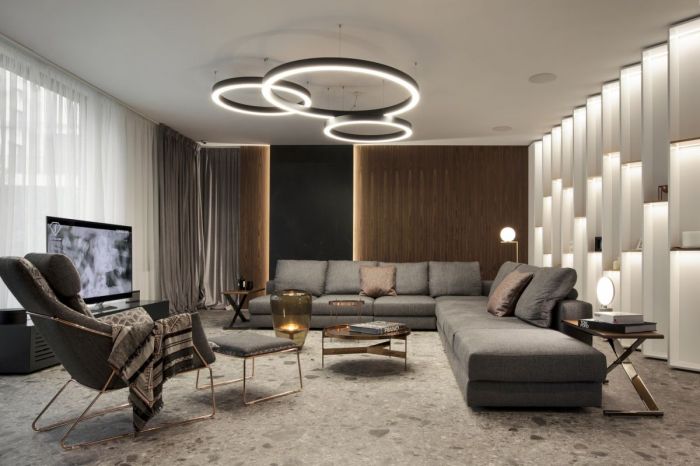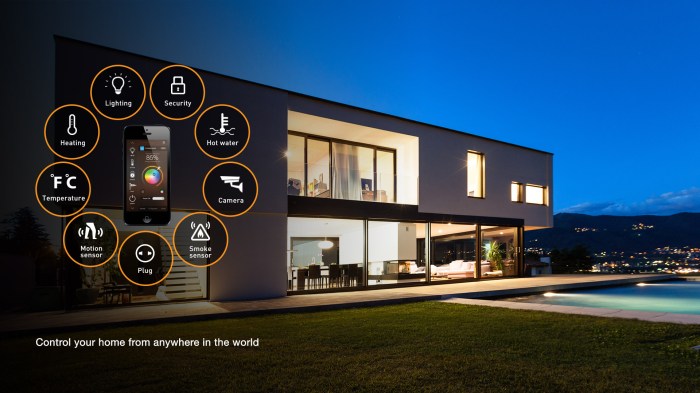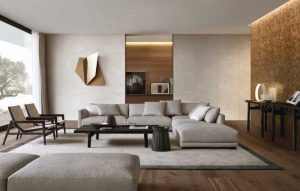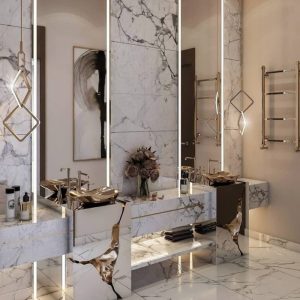
Smart Home Modern Living sets the stage for this enthralling narrative, offering readers a glimpse into a story that is rich in detail and brimming with originality from the outset. In today’s fast-paced world, the integration of smart technologies into homes has revolutionized the way we live, making our daily routines more convenient and efficient. Let’s delve into the world of smart homes and explore how they are shaping modern living.
This introduction sets the tone for an in-depth discussion on the benefits of smart home devices, minimalist design principles, the allure of modern classics, and the essence of modern living in our tech-driven era.
Smart Home Modern Living
In today’s modern living, the concept of smart homes has revolutionized the way we interact with our living spaces. Smart homes are equipped with interconnected devices and systems that can be controlled remotely to optimize comfort, security, and energy efficiency.
Benefits of Smart Home Technologies
Integrating smart technologies into homes offers a myriad of benefits that enhance the overall quality of life for residents. Some of the key advantages include:
- Increased convenience: Smart home devices allow for seamless automation of tasks such as adjusting lighting, temperature, and entertainment systems with the touch of a button or a voice command.
- Enhanced security: Smart security systems provide real-time monitoring and alerts, offering peace of mind for homeowners, especially when away from home.
- Improved energy efficiency: Smart thermostats, lighting, and appliances help optimize energy usage, reducing utility costs and promoting a more sustainable lifestyle.
- Remote access and control: The ability to monitor and control various aspects of the home remotely via smartphone or voice assistants adds an extra layer of convenience and flexibility to daily routines.
Enhanced Convenience and Efficiency
Smart home devices play a crucial role in enhancing convenience and efficiency in daily life by streamlining tasks and simplifying routines. These devices can automate repetitive actions, anticipate needs based on usage patterns, and adapt to preferences over time. By seamlessly integrating technology into our living spaces, smart homes enable us to lead more efficient, comfortable, and connected lifestyles.
Minimalist Design

Minimalist design in interior decor focuses on simplicity, functionality, and clean lines to create a sense of calm and organized living spaces. This design style eliminates excess clutter, unnecessary decorative elements, and opts for a more streamlined and straightforward approach.
Elements of Minimalist Design
- Neutral Colors: Minimalist design often incorporates a color palette of whites, creams, grays, and earth tones to create a soothing and harmonious environment.
- Clean Lines: Furniture and decor pieces in minimalist design feature straight lines and simple shapes, avoiding intricate details or ornate patterns.
- Functional Furniture: Multi-functional furniture pieces with sleek and practical designs are essential in minimalist interiors to maximize space and reduce clutter.
- Limited Decor: Minimalist spaces usually have minimal decoration, with only a few carefully selected pieces such as a statement artwork or a single decorative item to maintain a clean aesthetic.
Promoting Calm and Decluttered Living Spaces
Minimalist design promotes a sense of calm and decluttered living spaces by eliminating distractions and unnecessary elements that can cause visual chaos. By focusing on essential items and creating a harmonious flow within the space, minimalist interiors help reduce stress and provide a peaceful environment for relaxation and rejuvenation.
Modern Classics

In the realm of interior design, modern classics refer to furniture and decor pieces that have stood the test of time and continue to exude elegance and sophistication in contemporary living spaces.
Modern classic pieces are characterized by clean lines, minimalistic designs, and timeless appeal that seamlessly blend with various decor styles, making them versatile and enduring choices for homeowners.
Iconic Modern Classic Designs
- The Eames Lounge Chair and Ottoman: Designed by Charles and Ray Eames in the 1950s, this iconic piece features a sleek leather finish and a molded plywood frame, making it a symbol of mid-century modern design.
- The Barcelona Chair: Created by Ludwig Mies van der Rohe and Lilly Reich in 1929, this elegant chair with a stainless steel frame and leather upholstery is a staple in modern interiors.
- The Tulip Table: Designed by Eero Saarinen in 1956, this table with a sculptural base and a round or oval top adds a touch of sophistication to any dining or living area.
- The Arco Floor Lamp: Designed by Achille and Pier Giacomo Castiglioni in 1962, this floor lamp with a dramatic arched silhouette and a marble base is a timeless lighting fixture that complements modern spaces.
Modern Living
In the current era, modern living is characterized by a blend of functionality, minimalism, and technology integration. People today prioritize convenience, efficiency, and aesthetics in their living spaces, leading to a shift towards sleek design elements and smart home solutions.
Technology’s Influence on Modern Living
Technology has revolutionized the way people live in modern times by enabling connectivity, automation, and accessibility. Smart home devices such as voice assistants, smart thermostats, and security systems have become integral parts of households, enhancing convenience and security.
- Smart home technology allows for remote control and monitoring of various home functions, increasing efficiency and comfort.
- Integration of technology in modern living spaces promotes energy conservation and sustainability, aligning with eco-conscious trends.
- The Internet of Things (IoT) has transformed homes into interconnected hubs, where devices communicate and collaborate to streamline daily tasks.
Importance of Functional and Aesthetically Pleasing Living Spaces
Creating functional and aesthetically pleasing living spaces is crucial in the modern world to promote well-being, productivity, and overall quality of life. Designing homes that cater to both practical needs and visual appeal fosters a harmonious living environment.
- Functional living spaces optimize storage, organization, and usability, enhancing daily routines and reducing clutter.
- Aesthetically pleasing environments contribute to positive mental health, relaxation, and enjoyment of living spaces.
- Balancing functionality and aesthetics in home design reflects personal style and values, creating a sense of identity and belonging.
As we conclude our exploration of Smart Home Modern Living, it becomes evident that the fusion of technology and design has paved the way for a more streamlined and sophisticated lifestyle. From minimalist interiors to iconic modern classics, the essence of modern living lies in creating spaces that are both functional and visually appealing. By embracing smart home technologies, we can truly elevate our living experiences to new heights.
Questions and Answers
What are the key benefits of integrating smart technologies into homes?
Smart technologies enhance convenience, efficiency, and security in our daily lives. They allow for remote monitoring, energy savings, and seamless automation of various functions within the home.
How does minimalist design contribute to a sense of calm in living spaces?
Minimalist design focuses on simplicity, clean lines, and clutter-free environments, creating a tranquil atmosphere that promotes relaxation and mindfulness.
What defines modern classics in interior design?
Modern classics refer to timeless furniture and decor pieces that exude elegance and sophistication, transcending trends to maintain their appeal in contemporary settings.







